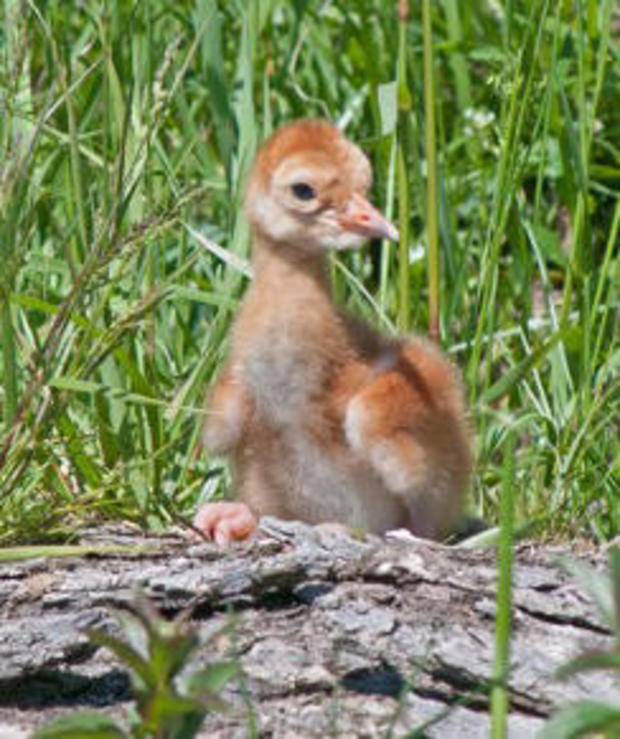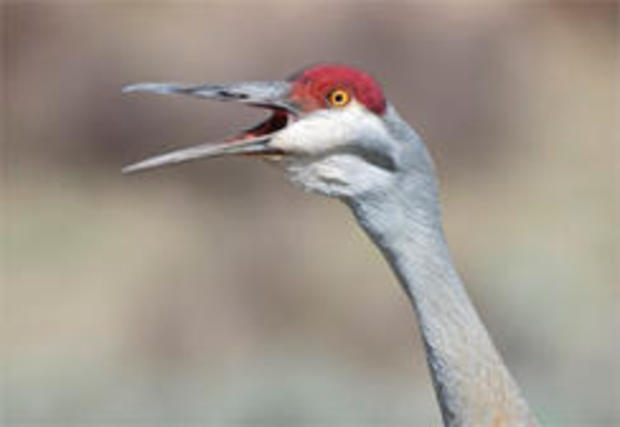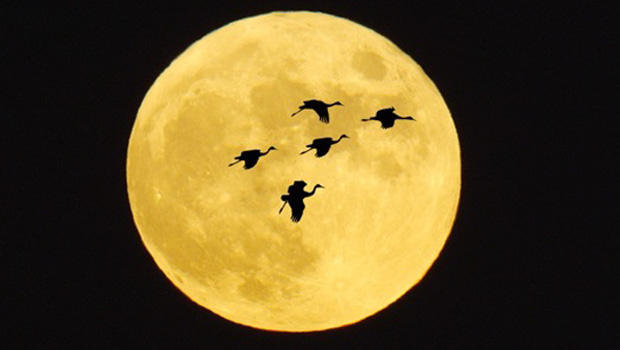Nature up close: Sandhill Cranes
By “Sunday Morning” contributing videographer Judy Lehmberg.
Sandhill cranes are fabulous birds. Of all North American birds they are second only to whooping cranes in height. They migrate long distances from their winter feeding grounds in Texas, California, southern New Mexico and Florida to their breeding grounds in the spring, in areas of the Rocky Mountains, Canada, Alaska and even Siberia. It takes them as long as seven years to reach sexual maturity and find a mate, but once they do they mate for life, which can be longer than 20 years.
The females usually lay two or sometimes three eggs, but often only one chick (colt) survives. They eat corn, tubers, insects, small mammals, reptiles, amphibians and snails. All of those are interesting facts, I suppose, but their importance as a symbol of wildness should not be overlooked.
We all need food, water and shelter to survive. Those keep us physically alive, but to keep our soul alive and healthy we need more. For me, and many others, wilderness -- wild places untouched by the hand of man -- are an absolute necessity. The number of truly wild places is dwindling as our population increases, but there are still some left (parks, reserves and wilderness areas) which allow us to get away and retune ourselves to a much slower and quieter way of life.
There are also sounds which can make us remember what wild really is: the howl of a wolf, the roar of a lion, or the bugling of an elk. When I hear the call of a sandhill crane I can’t help but stop and listen.
Sandhill crane calls, at Bosque del Apache
Whether it is the first cranes of autumn flying over our house at night calling to each other saying “I’m here,” “I’m over here,” “Wait for me, I’m coming!” or a thousand cranes coming into a pond to roost for the night, they all make me stop, listen and smile. It is a call I’ve heard thousands of times and I never tire of it. It truly is, for me, wildness remembered.
Not only do sandhill cranes have a beautiful call; they are also a big, beautiful and, most of all, majestic bird. Just before sunrise they prepare to leave there nighttime roost pond. They usually leave in small groups of 10 or 20 birds. As they begin to move they call quietly to each other and bend their necks in the direction they want to fly. Their calls make me think they are saying, “I’m ready to go eat breakfast. Are you coming with me? Are you sure your coming?” If it has been a cold night, rings of ice form around their legs. As they take off the ice shines in the rising sun and they begin to call more loudly. It is a singularly beautiful sight and sound. They overwhelm my senses, and I am completely enthralled with their grace and beauty.
If you would like to see sandhill cranes there are several places I can recommend: Jasper-Pulaski Fish and Wildlife Area near Medaryville, Indiana; along the Platte River in Nebraska, especially near Kearney; Bosque del Apache Wildlife Refuge in New Mexico; and Malheur Wildlife Refuge in Oregon.
Timing is important. Winter, from mid-November until the end of March, is usually the best time.
If you can’t get to any of these areas, you can get a crane “fix” from the Crane Cam at the Iain Nicolson Audubon Center at Rowe Sanctuary.
Judy Lehmberg is a former college biology teacher who now shoots nature videos.
For more info:
- Judy Lehmberg (Official site)
- Judy Lehmberg’s YouTube Channel
To watch extended “Sunday Morning” Nature videos click here!


